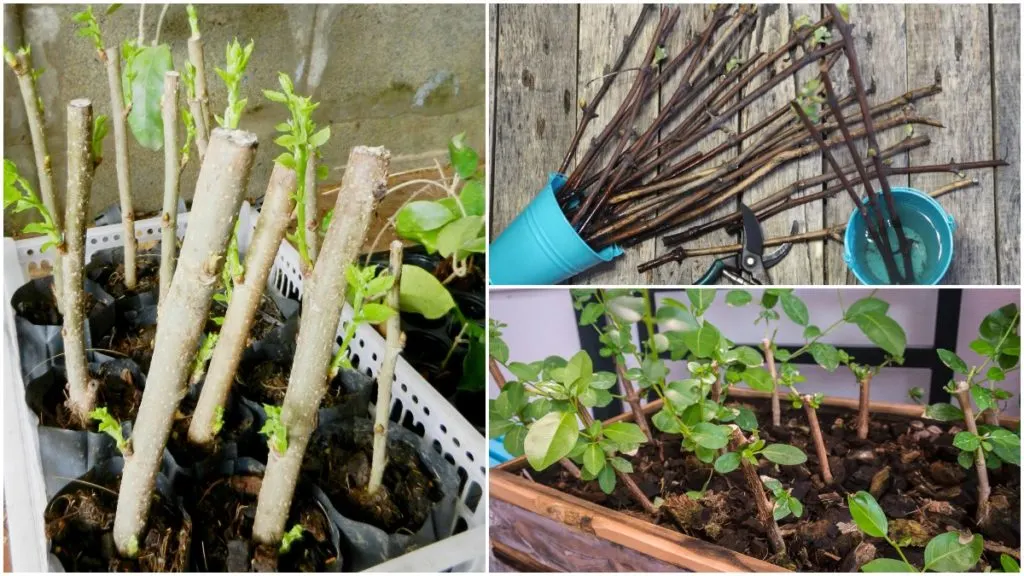
Hardwood cuttings are taken from woody shrubs and perennial plants in the fall or over the winter months.
Like cuttings taken at other times, they are a great way to increase the stock of plants in your garden. Now could be a good time to take stock, and take steps to fill in any gaps in your planting schemes.
Propagate from hardwood cuttings and you can increase your stock of fruit and berry producing plants. You can create new wind breaks or hedging at minimal cost. And you can create a more beautiful garden with a wide range of new ornamental deciduous shrubs and climbers.
It is also interesting to consider that propagating plants can be a way to diversify income streams on your homestead. New plants could potentially become another yield that could be sold to others in your area.
Whether you are taking hardwood cuttings for your own use, or for sale, there are plenty of different plants to propagate from hardwood cuttings. At this time of year, you may well be collecting lots of different seeds from your garden to sow and grow next year. But taking hardwood cuttings is another means of propagation that should not be overlooked.
Propagate From Hardwood Cuttings in Your Orchard/ Fruit Garden
One arena where you may benefit from taking hardwood cuttings is in an orchard, fruit garden or forest garden area. There are a wide range of fruit bushes/ fruiting shrubs that can be propagated in this way. For example, you can take hardwood cuttings from:
- Autumn Olives
- Bilberry
- Blueberry
- Currrants
- Elder – we have a dedicated tutorial to propagating elder from softwood cuttings here.
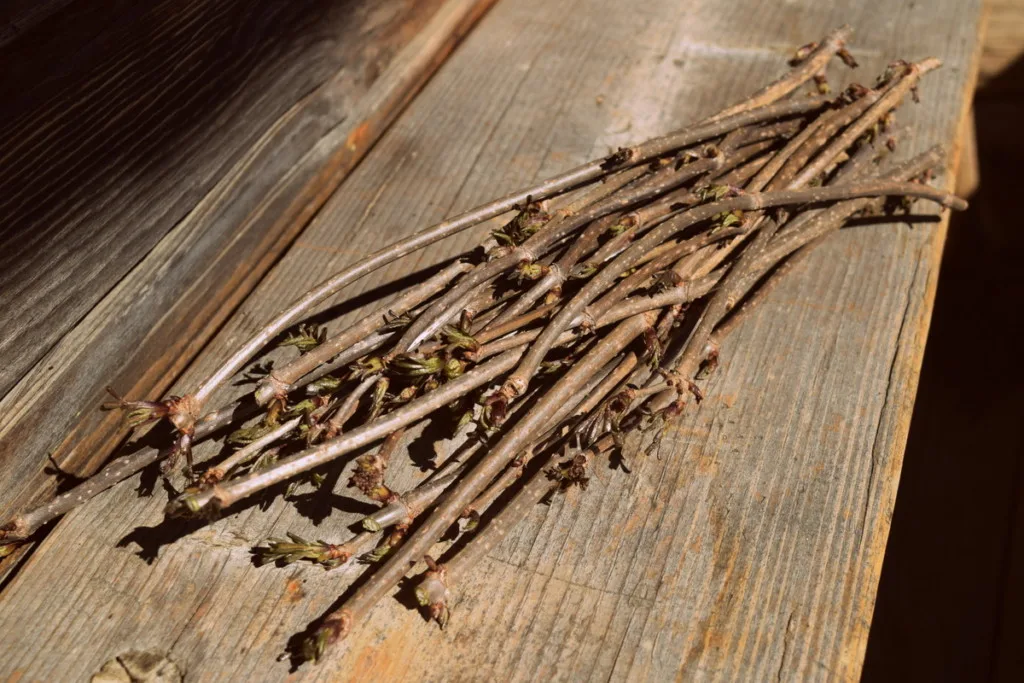
- Figs
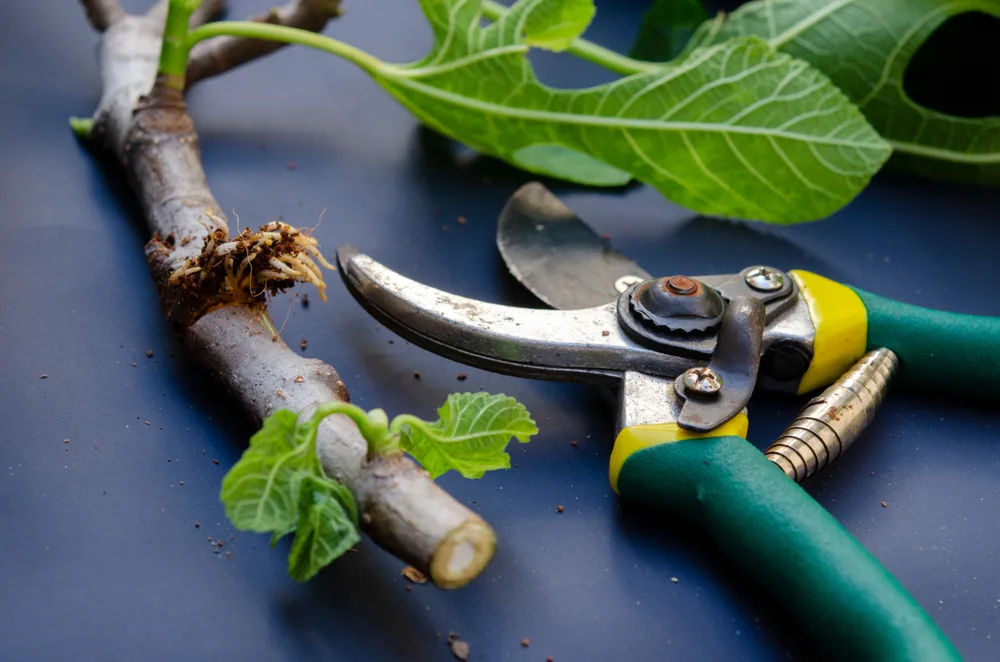
- Gooseberries
- Goumi
- Grapes
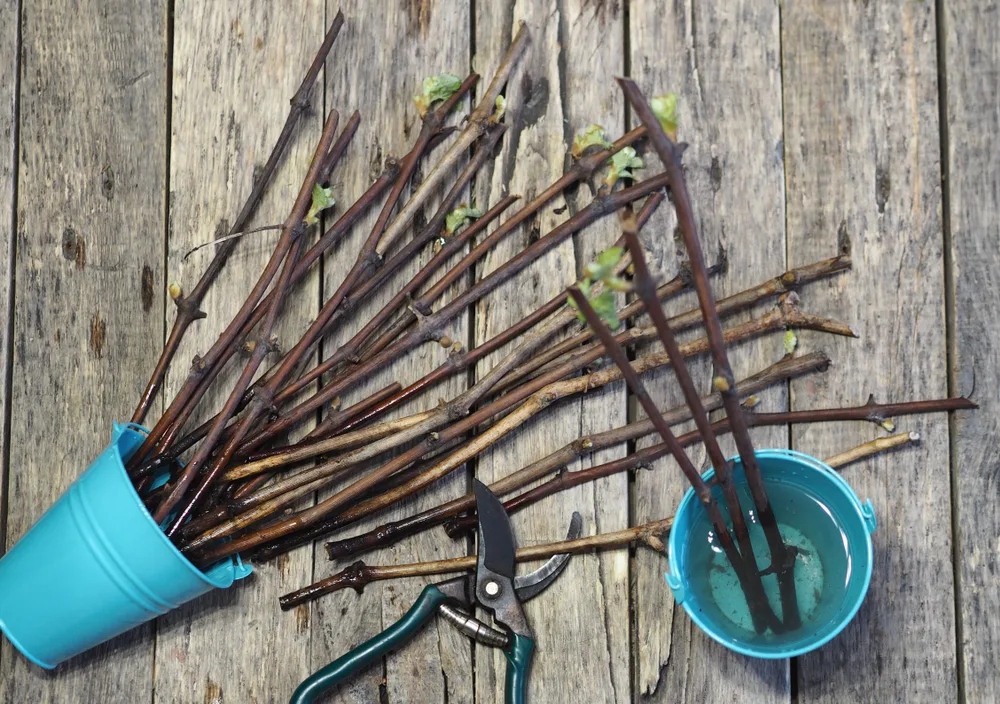
- Hawthorn
- Kiwi
- Mulberries
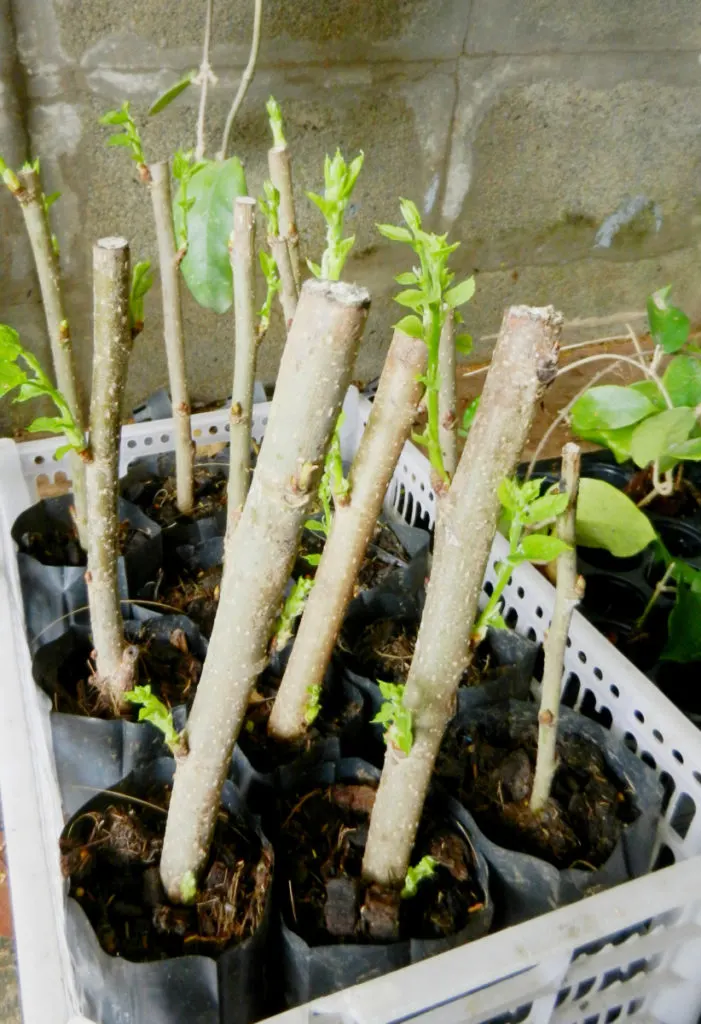
- Pomegranates
- Quince
- Sea buckthorn (Seaberries)
Taking hardwood cuttings from these and other woody edible crop plants is a great way to increase your stock of fruit and berries in your garden.
I myself have successfully propagated several of the above from hardwood cuttings. The Elaeagnus ssp. (Autumn olives, Goumi) root readily with no assistance where I live, as do elder and gooseberries. I have also had great success with both red currants and black currants.
Propagate From Hardwood Cuttings For Windbreaks and Hedgerows
Another area where taking hardwood cuttings can be very useful is where you want to create new windbreaks or hedges. It can be expensive to purchase a large number of trees and shrubs. So you can save a lot of money by propagating your own from existing plant stock.
Of course, many of the fruiting shrubs and trees mentioned above are also great for these uses – especially elder, hawthorn, autumn olives, goumi and sea buckthorn… And here are some other useful species that you can propagate for these uses:
- Broom
- Dogwood
- Euonymus
- Forsythia
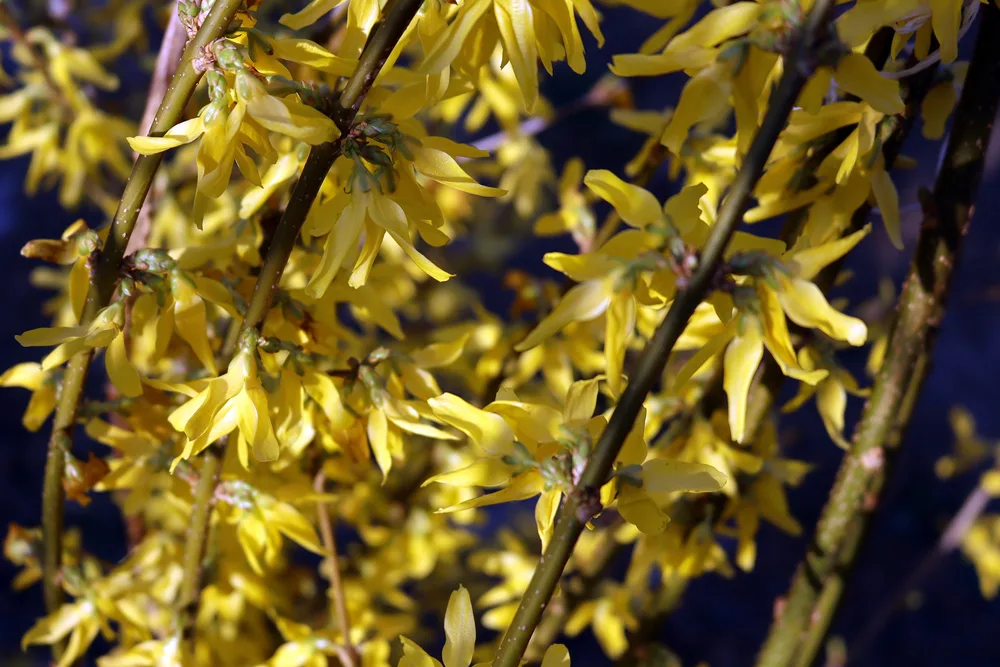
- Laburnum
- Plane trees
- Poplars
- Privet
- Viburnums
- Willows
Of course, these are just a few examples. By growing your own new trees and shrubs, you can save a lot of money in lining the boundary of your property, or protecting your property from winds.
Propagate Ornamental Shrubs From Hardwood Cuttings
Most deciduous shrubs can be propagated from hardwood cuttings, so you will find that there is no shortage of options when it comes to creating new ornamental shrubs. In addition to some of those mentioned above, other great options to consider taking hardwood cutting from include:
- Abelia
- Deutzia
- Hibiscus (Rose of Sharon)
- Hydrangeas
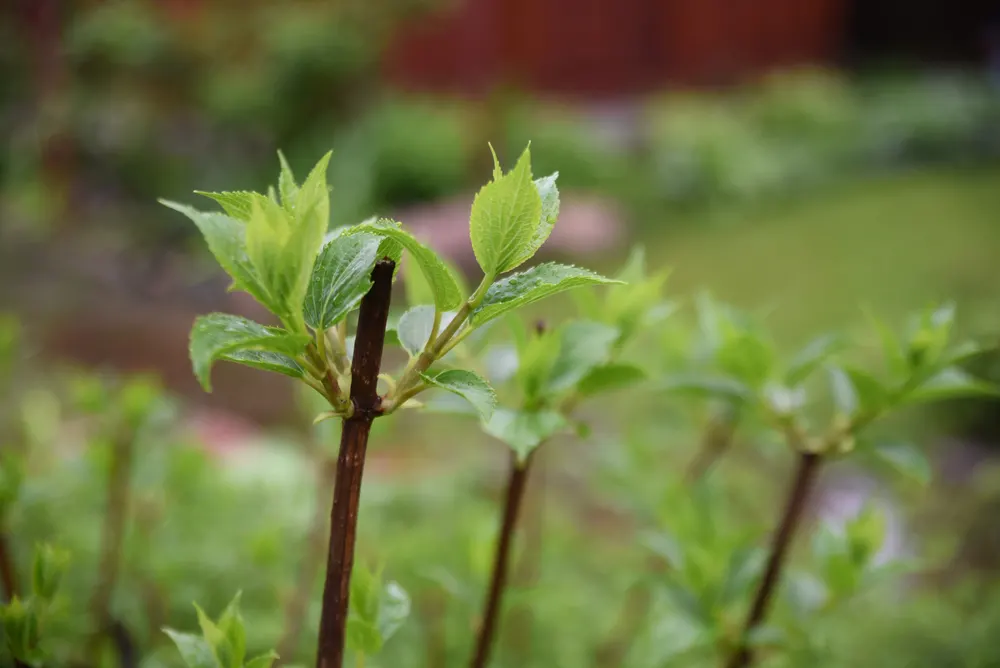
- Mock Orange
- Ninebark
- Ribes (Flowering Currant)
- Roses
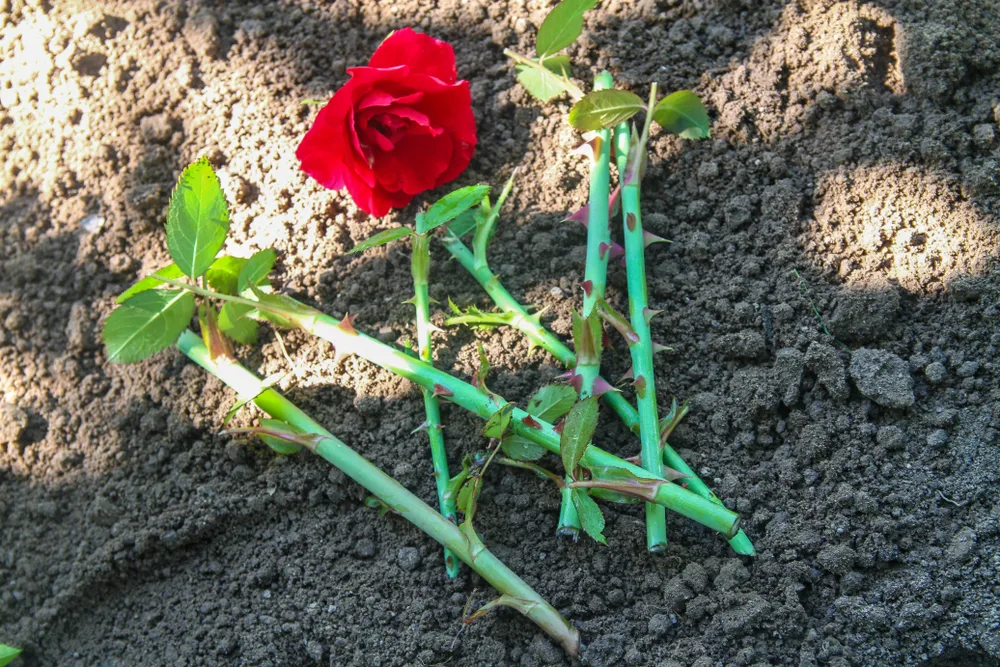
- Spiraea
- Weigela
If you have a deciduous, woody shrub in your garden that you love, it may well be worthwhile attempting to take some hardwood cuttings from it once the dormant period arrives.
Propagate Climbers From Hardwood Cuttings
You can also propagate a range of climbers and vining plants in this way. For example, this is a technique which you may like to try with:
- Boston Ivy
- Honeysuckles
- Jasmine
- Trumpet Creeper
- Virginia Creeper
How To Take Hardwood Cuttings
- Choose healthy stems, small branches or vine sections from your shrubs, trees or climbers.
- Cut straight across the stems, cutting across with a clean, sharp implement just above a bud.
- Next, cut off any soft growth at the growing tip end of the cutting. Cut at a sloping angle so water will run off the top of your cutting, and so you can easily see which end goes up.
- Cut your chosen stem/branch/vine section into pieces around 12 inches in length. (Making a straight cut at the base, and a sloping cut at the top of each section.
- Best results will often be achieved if you dip the ends of your cuttings into something to promote root formation. Hormone rooting powder is one option, though willow, honey or cinnamon, for example, can also be used to make a rooting solution to improve results. However, this is not always necessary, and many hardwood cuttings will successfully take without assistance.
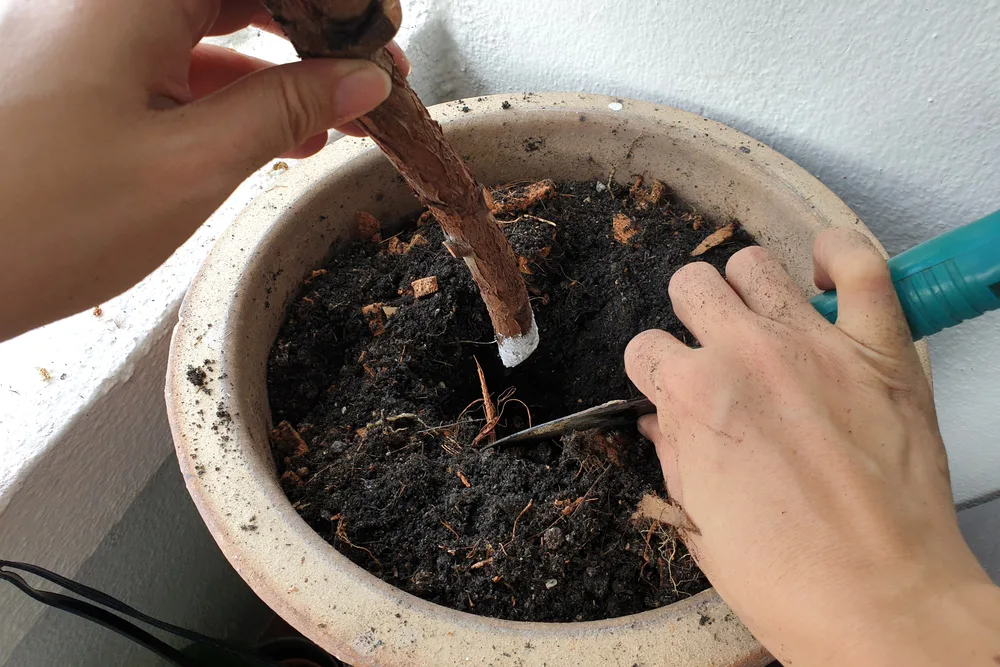
How to Make Your Own Rooting Hormone Alternative
Make willow water. Cut fresh young willow growth in spring into 1 inch pieces. Put them in a jar, 1/3 twigs to 2/3 boiling water. Leave in a sunny spot for at least 24 hours. Strain, and use this to water your cuttings.
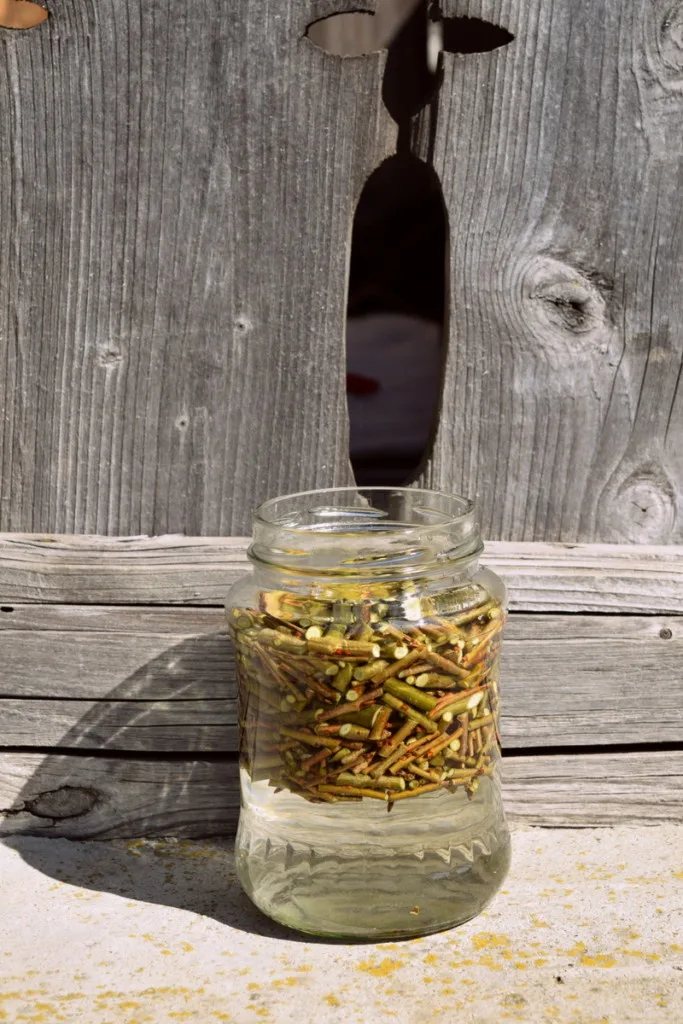
Use honey water. Add 1 tbsp of organic honey to 2 cups of boiling water. Stir to combine, leave to cool, and use on your cuttings within a couple of weeks.
Use apple cider vinegar and cinnamon. Dip cuttings into a solution of 3 tsp ACV in 1 gallon of water. Then dip the ends of the cutting into ground cinnamon.
There are also a few other techniques that may aid in rooting for more challenging hardwood cuttings.)
- Transfer your cuttings to where they are to grow on as soon as possible, so they don’t dry out.
Hardwood cuttings can be placed in containers, or into a bed or trench prepared with plenty of organic matter. Ideally, it is best to prepare the area before taking your cuttings. Since the cuttings will usually stay in place for a full 12 months after you plant them in the ground or containers, it is important to choose their location carefully.
How to Plant Hardwood Cuttings
- Insert your hardwood cuttings into the soil or growing medium in containers, leaving around 1/3 of each one visible. If placing them in the ground or a bed, leave around 4-6 inches between them. (Roots will form below the surface, and new green growth should emerge from buds above the surface in spring.)
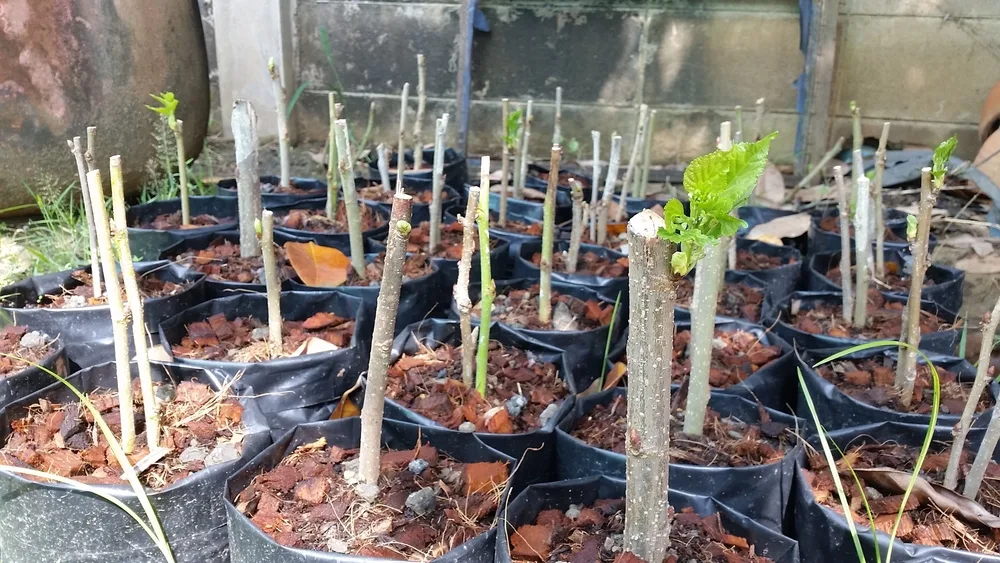
- Firm the ground around the cuttings to ensure good contact and to make sure they are held in place firmly. Water in your cuttings.
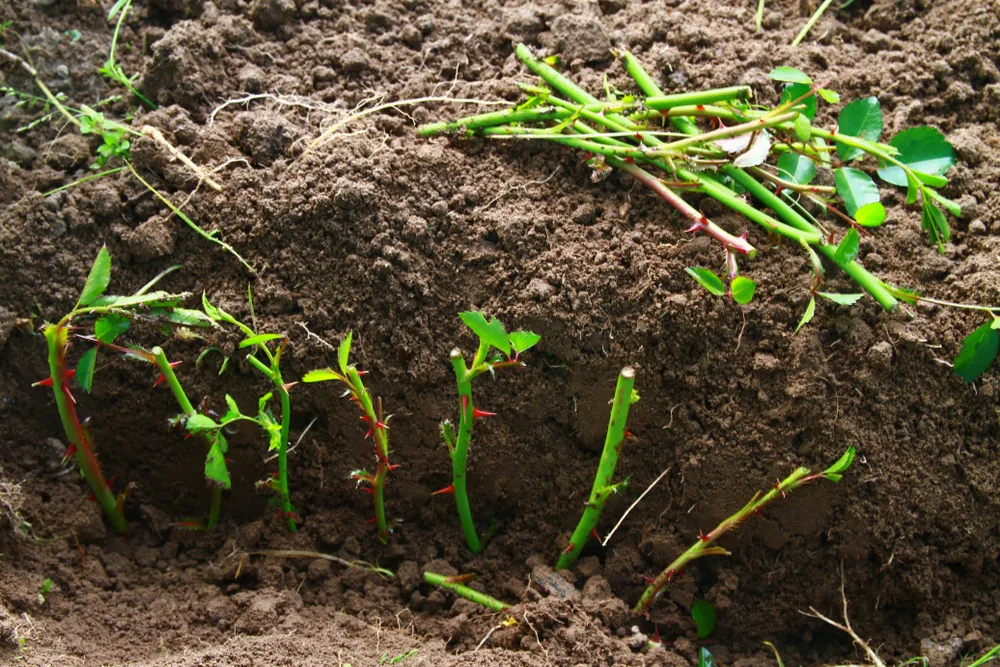
- In colder climates, it may be a good idea to offer some form of protection for certain cuttings. You may wish to place them in a greenhouse, high tunnel, or cold frame. Or you might use cloches to fend off the worst of the winter cold. However, many hardwood cuttings will remain dormant over the winter months and should require little protection or care during this time.
- Leave your cuttings in place until next fall. In spring, roots should be well on the way to forming, and new growth should emerge. It is always a good idea to take more cuttings than you think you need, to make up for any losses or failures.
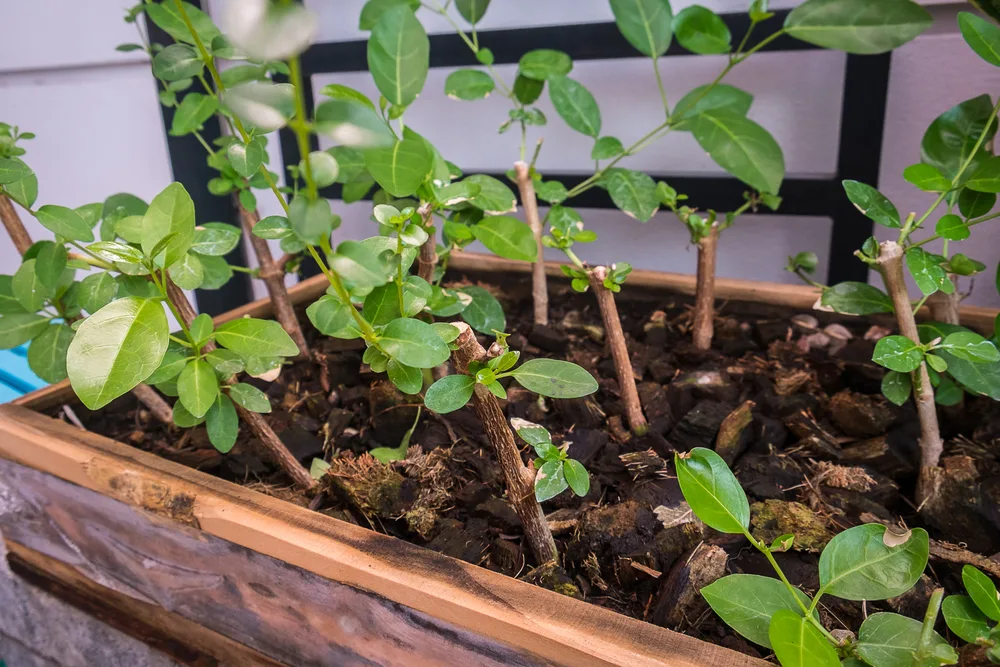
- Make sure your cuttings are watered over the summer months. (Remember, you will need to water more if your hardwood cuttings are growing in containers than you will if they are in the ground.)
- Next fall, you will be able to take them and transplant them into their permanent growing positions.
Taking hardwood cuttings is easy, and you have nothing to lose. Even if the cuttings don’t take, you have not lost out. Taking a few hardwood cuttings won’t usually do any harm at all to the parent plant. And you stand the chance of getting new plants for your garden entirely for free.
Other Options For Plant Propagation
Hardwood cuttings are only one type of cutting to take in your garden. If you have plants that are not usually propagated in this way, there are other types of cutting you can take: softwood cuttings, and semi-ripe cuttings.
Softwood cuttings are usually taken in spring, during the first flush of growth. But certain semi-ripe cuttings can also be taken at this time of year. So this is something else that you may like to look into this month.
Propagating plants by seed (collecting your own), by division, or by layering are also all interesting things to consider. These are all other ways to increase the number of plants in your garden for free.
It can take time, and there is a lot to learn about plant propagation. But it is often much easier to achieve than you might think. And it is definitely worthwhile giving these things a go if you want a truly beautiful and productive garden.

Get the famous Rural Sprout newsletter delivered to your inbox.
Including Sunday musings from our editor, Tracey, as well as “What’s Up Wednesday” our roundup of what’s in season and new article updates and alerts.

